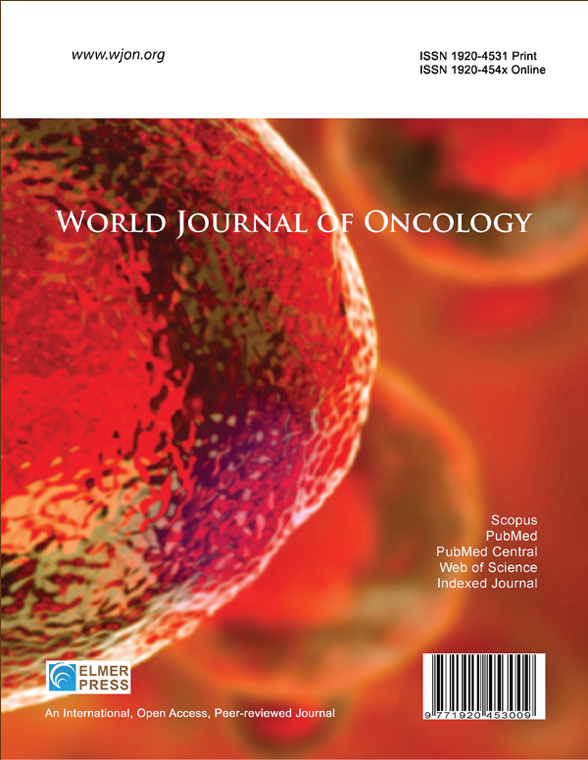Neoadjuvant Chemotherapy Plus Denosumab Compared to Chemotherapy Alone in Hormonal Receptor-Positive, Human Epidermal Growth Factor Receptor 2-Negative Premenopausal Breast Cancer Patients
DOI:
https://doi.org/10.14740/wjon2546Keywords:
Breast cancer, Denosumab, Chemotherapy, NeoadjuvantAbstract
Background: High mRNA expression levels of receptor activator of nuclear factor-kB (RANK) were linked with several adverse prognostic factors in breast cancer. The present study aims to assess the activity of neoadjuvant chemotherapy combined with denosumab compared to chemotherapy alone in premenopausal patients with hormonal receptors (HR)-positive, human epidermal growth factor receptor 2 (HER2)-negative breast cancer.
Methods: In this single-center randomized phase II study, we enrolled patients with ER Allred score 4 - 8 at diagnostic biopsy with locally advanced either inoperable tumors or tumors that need downsizing to allow for breast conservative surgery (BCS). Enrolled patients were randomized to receive either neoadjuvant chemotherapy (four cycles of epirubicin/doxorubicin with cyclophosphamide and four cycles of docetaxel) with denosumab or the same chemotherapy alone. Patients in the experimental arm received subcutaneous denosumab 120 mg starting with the first chemotherapy cycle and then with every other cycle (total of four doses). Residual cancer burden (RCB) was the primary endpoint.
Results: We recruited 50 patients (26 in control arm, 24 in experimental arm) for the study. Baseline characteristics were balanced between the two arms including age at diagnosis, ER Allred score (≤ 6 vs. > 6), progesterone receptor (PR) status, Ki67 level, clinical T, clinical N, and clinical stage (stage II vs. III). Noteworthy, 86% of patients were node-positive, 44% had cT4 tumors and 80% had ER Allred score > 6. Two patients in the control arm did not undergo breast surgery (one lost to follow-up, the other had local progression). There was no difference in the rates of BCS (58.3% in both arms) between the two arms. No difference in RCB between control and experimental arms (RCB 0-1: 25% vs. 20.8%, respectively, P = 0.73) was found. Similarly, there were no differences in pathological T stage (pT0-1: 87.5% vs. 70.8%, P = 0.29), pathological N stage (N0: 41.7% vs. 29.2%, P = 0.55) or pathological stage (41.6% vs. 33.3%, P = 0.75). No significant difference in adverse events profiles between the two arms was observed.
Conclusions: Adding denosumab to neoadjuvant chemotherapy was not associated with lower RCB or improved pathological stage in premenopausal HR+/HER2-negative breast cancer patients with comparable rate of BCS. No new safety signals were observed with the addition of denosumab.

Published
Issue
Section
License
Copyright (c) 2025 The authors

This work is licensed under a Creative Commons Attribution-NonCommercial 4.0 International License.










